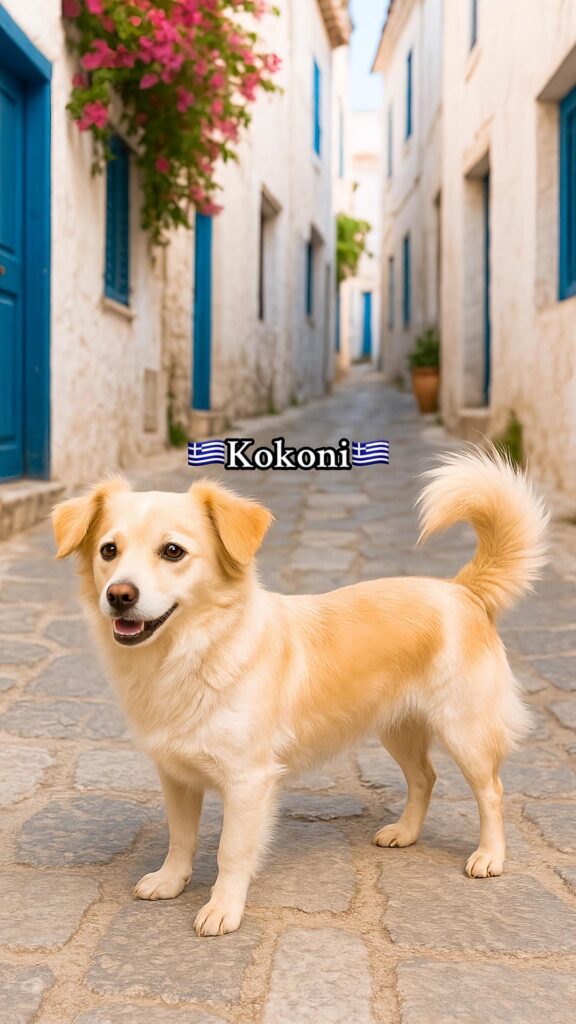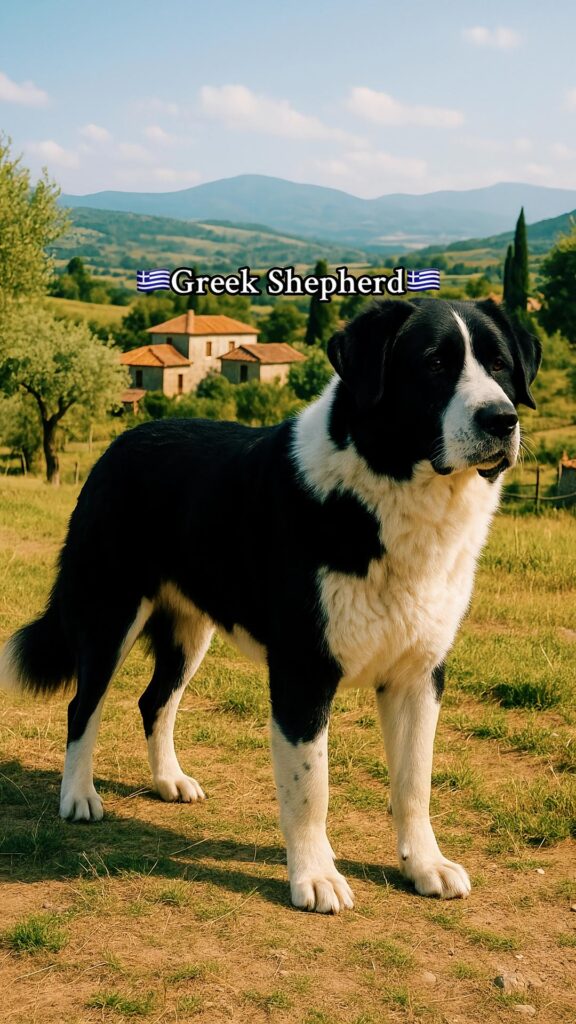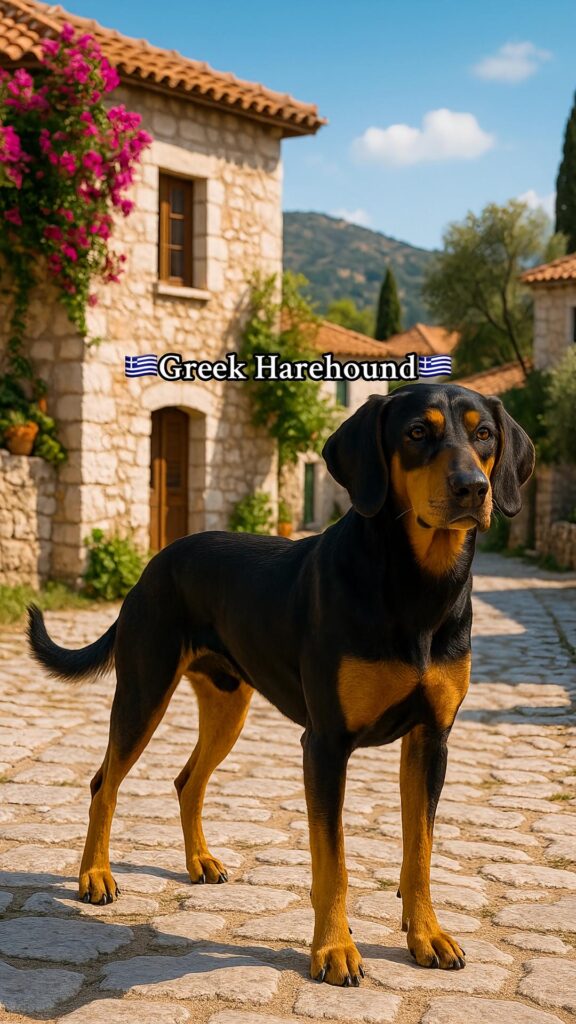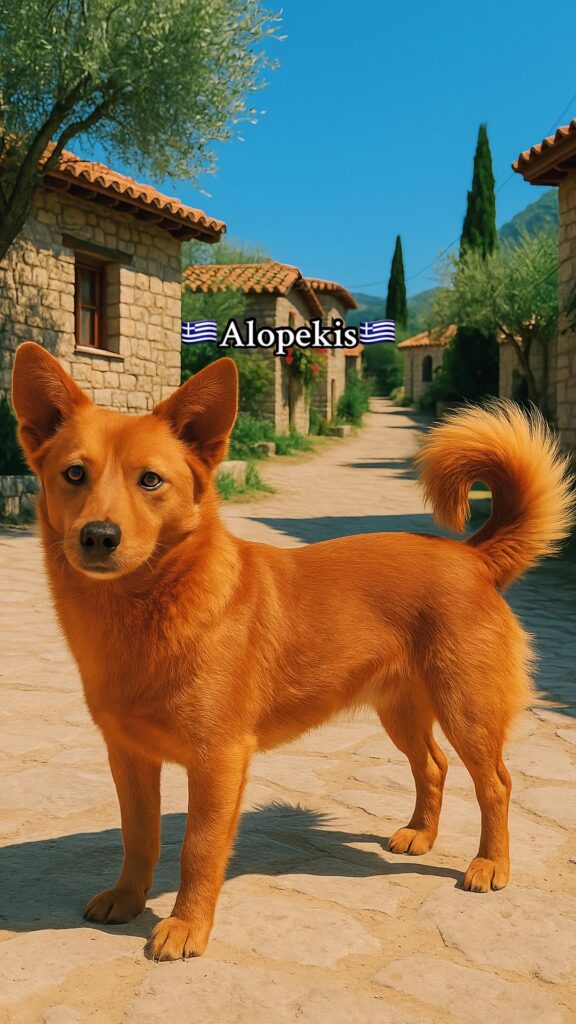Famous Greek Dog Breeds
Greece has made a significant impact on the breeds of the modern world. The English Mastiff, Great Dane, Neapolitan Mastiff, Rottweiler and St Bernard amongst others can trace their roots back to the ancient Molosser, or Molossian Hound which was from Epirus in Ancient Greece. The Laconian Hound ( Spartan Hound ) was a sight hound with long slender legs and a deep chest, and these dogs were highly prized across the Mediterranean and Middle East influencing the Greyhound, Saluki, Sloughi as well as the Whippet. The Cretan Hound still exists today and led to the creation of the Ibizan Hound, Pharaoh Hound and the Cirnceo Dell’Etna.
The Modern Echo of the Laconian Dog
The Laconian dog, famed in Ancient Greece, was a prized hunting companion—swift, agile, and tireless. Described by Xenophon in his 4th-century BCE treatise Cynegeticus, this hound was lean and elegant, used primarily for chasing hares across rocky hills. It relied on speed, sight, and endurance, with two known types: a fast, sighthound-like variant and a heavier, scent-driven tracker. These dogs were bred for pure function: to assist hunters on foot in open, rugged terrain.
In modern times, the original Laconian hound no longer exists as a recognized breed. However, its legacy persists in dogs like the Cretan Hound (Kritikos Lagonikos), one of the oldest European breeds still in use. The Cretan Hound shares many characteristics with its ancient cousin—slim build, curved tail, upright ears, and dual-use of sight and scent. Yet even it has evolved to suit contemporary hunting needs and has been influenced by other breeds over centuries.
Today’s Mediterranean sighthounds (like the Ibizan Hound or Pharaoh Hound) reflect some of the ancient Laconian’s traits, but modern breeding has introduced changes. Contemporary breeds are often standardized for appearance, health testing, and show standards. In contrast, the ancient Laconian dog was selected solely for performance in the field, not conformity to a physical ideal.
Moreover, modern dogs are part of a structured breeding system, whereas the Laconian hound existed in a pre-breed era, shaped by local environment and human necessity rather than registries.
In essence, the spirit of the Laconian dog survives—in fast, functional hunting dogs across southern Europe—but the original form, bred by Spartans and celebrated by philosophers, is a memory held in ancient texts and echoed in the bones and instincts of its modern descendants.

The Kokoni Dog: Greece’s Beloved Little Companion
The Kokoni is a small, lively companion dog native to Greece, known for its affectionate nature and long-standing presence in Greek households. Though only formally recognized in recent decades by the Greek Kennel Club, the Kokoni is far from new—it descends from ancient small domestic dogs that have lived alongside Greeks for centuries. Ancient pottery and texts show depictions of similar dogs dating back to classical antiquity, suggesting the Kokoni may trace its lineage to pets of the ancient world.
Bred primarily as a companion animal, the Kokoni was traditionally found in rural villages, where it served both as a loving family dog and an alert watchdog. While it lacks the guarding strength of larger breeds, its keen hearing and vocal nature made it an excellent early warning system.
Kokonis are small to medium-sized, typically weighing between 4 to 8 kg (9–18 lbs), with a compact frame, plumed tail, and medium-length coat that comes in many colors and patterns. Their fox-like face and expressive eyes give them a charming, intelligent appearance.
In terms of temperament, the Kokoni is loyal, cheerful, and highly social. It bonds strongly with its family, is usually good with children, and gets along well with other pets when properly socialized. While playful and energetic, it is also content to curl up beside its owner and relax.
Despite its modest size, the Kokoni has a brave and spirited personality. It’s known for being vocal, often barking at strangers or unfamiliar noises. This trait, combined with its affectionate nature, makes it a loving but alert little watchdog.
Today, the Kokoni is gaining popularity beyond Greece as a delightful and adaptable family pet—a modern dog with roots in the ancient world.

The Greek Shepherd: Guardian of the Mountains
The Greek Shepherd (or Ellinikos Poimenikos) is a powerful, ancient livestock guardian dog, bred for centuries in the rugged mountains of Greece. Rooted in the traditions of transhumant shepherding, this breed has protected flocks from wolves, jackals, and thieves, often working alone or in pairs with little human direction. It is considered a descendant of Molossian dogs of antiquity, the same lineage that gave rise to many modern mastiff breeds.
Purpose-built for endurance and defense, the Greek Shepherd is highly territorial, courageous, and independent. It is not a herder but a guardian, instinctively bonding with the flock it protects. This role has shaped the breed’s temperament—it is suspicious of strangers, fiercely protective of its family or charges, and calm but assertive in demeanor.
This is a large, heavily built dog, with males typically weighing 40–55 kg (88–120 lbs) and standing 60–75 cm (24–30 inches) tall. It has a thick double coat, well-suited for harsh weather, with common colors including white, black, gray, and piebald. Its dense fur and powerful frame make it look imposing, but its movement is surprisingly agile on mountainous terrain.
The Greek Shepherd is not a dog for novice owners—it needs space, structure, and experienced handling. When raised properly, however, it is devoted, loyal, and deeply bonded to its human family. It does best in rural environments where it can live naturally, often alongside livestock.
Although not widely known outside Greece, the breed is considered a national treasure, with efforts underway to preserve its purity amid threats from crossbreeding and urbanization.
The Greek Shepherd remains a living symbol of Greece’s pastoral heritage—a dog of strength, loyalty, and ancient purpose, still guarding the flocks as it has for thousands of years.

The Greek Harehound: A Tireless Hunter of the Hills
The Greek Harehound (Hellinikos Ichnilatis) is Greece’s only nationally recognized scent hound, developed over centuries for the fast-paced pursuit of hares in the country’s rocky and mountainous terrain. Rooted in ancient hunting traditions, this breed likely descends from ancient Greek scenthounds and has remained remarkably pure, shaped more by rugged conditions and working ability than by appearance.
This medium-sized hound is built for speed, stamina, and scenting ability. It typically weighs 17–20 kg (37–44 lbs) and stands 47–55 cm (18–22 inches) tall. The breed is muscular yet agile, with long ears, a deep chest, and a short, dense black-and-tan coat that protects it from thorns and rough ground. Unlike many show breeds, the Greek Harehound’s look reflects its function-first background.
Bred to trail hares by scent and to chase them relentlessly, the Greek Harehound is tenacious, energetic, and highly driven. It has an excellent nose and a loud, melodic bark that hunters can follow through dense brush and hillsides. While primarily used for hunting, it can also adapt to life as a companion dog for active owners.
In the home, the Greek Harehound is typically loyal, intelligent, and gentle, though it can be independent and stubborn, especially if under-stimulated. It requires regular exercise and mental stimulation—without it, boredom can lead to problem behaviors.
Still relatively unknown outside of Greece, this breed is beloved by rural hunters and is slowly gaining appreciation in breed preservation circles. It is well-suited to the outdoors and thrives in rural or semi-rural settings where it can explore and run.
The Greek Harehound is a living link to Greece’s ancient hunting past—a resilient, passionate working dog that excels in the field and brings energy and loyalty into the home.

The Cretan Hound: Greece’s Ancient Hunting Treasure
The Cretan Hound (Kritikos Lagonikos) is one of Europe’s oldest and most unique dog breeds, native to the island of Crete. With origins tracing back over 3,000 years, it is widely regarded as a direct descendant of the hunting dogs of ancient Greece. This breed has been prized by island hunters for centuries for its exceptional tracking and chasing skills in Crete’s rugged, mountainous terrain.
Built for both sight and scent hunting, the Cretan Hound is a versatile and highly skilled predator. It uses keen eyesight to spot prey from a distance and a sharp nose to track scents, making it perfect for hunting hares, rabbits, and small game in dense brush and rocky landscapes.
The breed is medium-sized, typically weighing between 13 to 18 kg (29 to 40 lbs) and standing around 47 to 55 cm (18 to 22 inches) tall. It has a sleek, athletic build with a narrow chest, long legs, and a distinctive curved tail. Its coat is short, dense, and comes in various colors including tan, brindle, black, and white.
The Cretan Hound is known for its intelligence, agility, and independence. It has a calm and gentle temperament but is also alert and energetic during hunts. This breed bonds closely with its owner and is usually affectionate and loyal but retains a strong hunting drive.
Unlike many modern breeds, the Cretan Hound has undergone little selective breeding for looks, instead evolving naturally to suit its working environment. This has preserved its functional efficiency and resilience.
Today, the Cretan Hound remains a beloved symbol of Crete’s heritage—a living link to the island’s ancient past and a testament to the enduring bond between humans and dogs in Greek culture.

The Alopekis: Greece’s Ancient Fox-Like Dog
The Alopekis is a small, ancient dog breed native to Greece, with a history stretching back thousands of years. The name “Alopekis” means “little fox” in Greek, a fitting description given its fox-like appearance, with a slender muzzle, pointed ears, and bushy tail. Archaeological finds, including ancient pottery and frescoes, depict dogs resembling the Alopekis, suggesting it may be one of Europe’s oldest native breeds.
Traditionally, the Alopekis was a versatile village dog, serving as a companion, watchdog, and hunter of small game and vermin. It thrived in rural Greek communities where it adapted to various roles, helping to keep farms free of pests while providing loyal companionship to families.
The breed is small, typically weighing between 4 and 8 kg (9–18 lbs) and standing around 25 to 40 cm (10–16 inches)tall. It has a compact, athletic build with a double coat that ranges from short to medium length, often in shades of tan, brown, black, or a mix. Its agility and alertness make it an excellent little guardian despite its size.
Temperamentally, the Alopekis is known for being intelligent, energetic, and independent. It is alert and wary of strangers, making it a good watchdog, yet it is affectionate and devoted to its family. It thrives in active households and enjoys mental and physical stimulation.
Though less well-known internationally, the Alopekis is a cherished part of Greece’s canine heritage. Conservation efforts are underway to preserve the breed, which is valued for its hardiness, versatility, and strong connection to Greek history.
